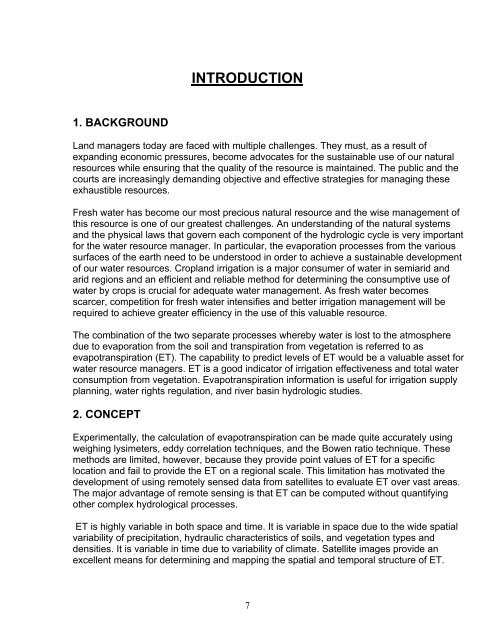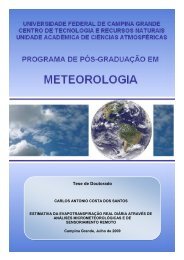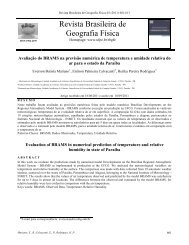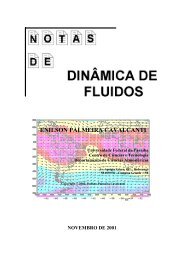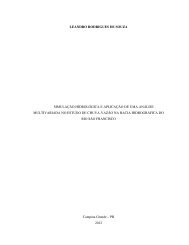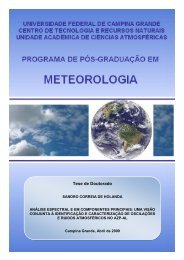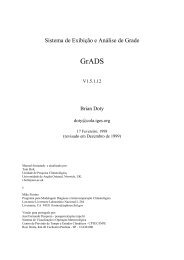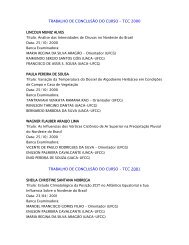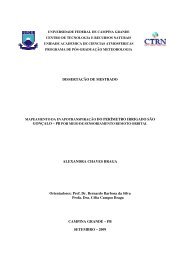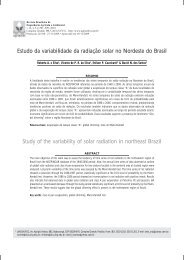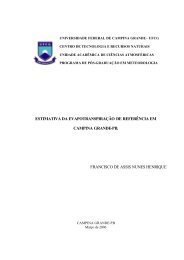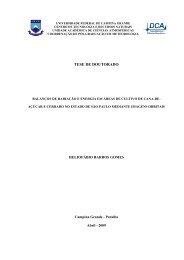You also want an ePaper? Increase the reach of your titles
YUMPU automatically turns print PDFs into web optimized ePapers that Google loves.
INTRODUCTION1. BACKGROUNDLand managers today are faced with multiple challenges. They must, as a result ofexpanding economic pressures, become advocates for the sustainable use of our naturalresources while ensuring that the quality of the resource is maintained. The public and thecourts are increasingly demanding objective and effective strategies for managing theseexhaustible resources.Fresh water has become our most precious natural resource and the wise management ofthis resource is one of our greatest challenges. An understanding of the natural systemsand the physical laws that govern each component of the hydrologic cycle is very importantfor the water resource manager. In particular, the evaporation processes from the varioussurfaces of the earth need to be understood in order to achieve a sustainable developmentof our water resources. Cropland irrigation is a major consumer of water in semiarid andarid regions and an efficient and reliable method for determining the consumptive use ofwater by crops is crucial for adequate water management. As fresh water becomesscarcer, competition for fresh water intensifies and better irrigation management will berequired to achieve greater efficiency in the use of this valuable resource.The combination of the two separate processes whereby water is lost to the atmospher<strong>edu</strong>e to evaporation from the soil and transpiration from vegetation is referred to asevapotranspiration (ET). The capability to predict levels of ET would be a valuable asset forwater resource managers. ET is a good indicator of irrigation effectiveness and total waterconsumption from vegetation. Evapotranspiration information is useful for irrigation supplyplanning, water rights regulation, and river basin hydrologic studies.2. CONCEPTExperimentally, the calculation of evapotranspiration can be made quite accurately usingweighing lysimeters, eddy correlation techniques, and the Bowen ratio technique. Thesemethods are limited, however, because they provide point values of ET for a specificlocation and fail to provide the ET on a regional scale. This limitation has motivated thedevelopment of using remotely sensed data from satellites to evaluate ET over vast areas.The major advantage of remote sensing is that ET can be computed without quantifyingother complex hydrological processes.ET is highly variable in both space and time. It is variable in space due to the wide spatialvariability of precipitation, hydraulic characteristics of soils, and vegetation types anddensities. It is variable in time due to variability of climate. Satellite images provide anexcellent means for determining and mapping the spatial and temporal structure of ET.7


